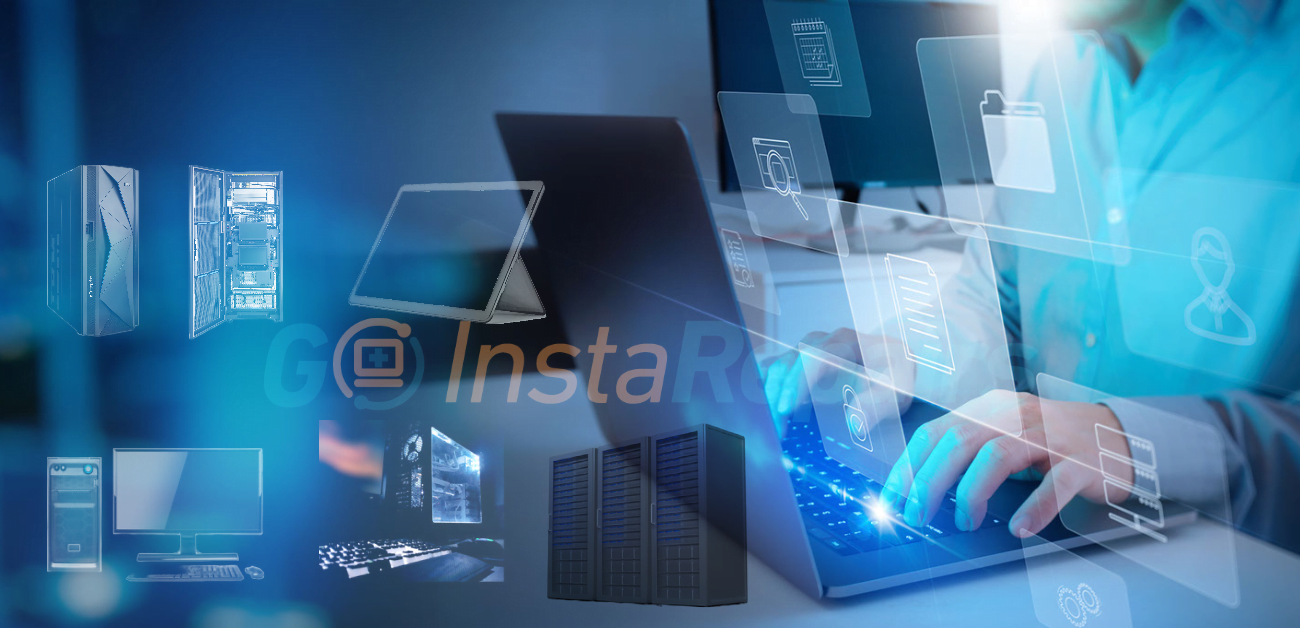Different Types of Computers
Central Processor Unit (CPU)
Also known as procesor. It performs or processes the calculations and instructions to run the computer
Ramdom Access Memory (RAM)
Memory RAM will allow your computer to perform at a proper speed while you run different tasks at the same time. It holds information, temporarily as a short-term memory storage.
In our previous posts, we discussed the computer its hardware and its software. Now let’s go over the most popular computer types.
We will post an article, exclusively, about “super computers”.
The desktop computers come with a CPU unit, also known as a Tower. These are the large computer equipment you find in your home or office. Desktop computers need to function with peripherals such as a monitor, mouse, and keyboard.
It houses the physical hardware that makes a computer run and connects to the peripherals above mentioned. These computers are usually found in businesses or gamer’s rooms.
They are small, portable personal computers. Most people prefer them because they are lighter and more compact than a regular desktop computer. The main difference is that they combine a desktop computer’s input and output capabilities and components, including its display screen, keyboard, speakers, data storage, disc drives, and pointing devices with a processor and operating system into a smaller device. They are usually used by college students or professionals who need to travel with their computers and get work done wherever they find themselves.
Tablets
In the past, we used to have Netbooks, which were designed mainly to surf the net. Nowadays we have tablets; thin, flat devices that look like larger versions of smartphones. These are more portable than computers. They have a longer battery life and can also do smartphone-like activities like taking photos, playing games, and drawing with a stylus. You can even add an external keyboard allowing you to use it as a mini-laptop.
Microsoft Surface
Apple iPad Pro
Android Tablet
Business computers

Mainframe Computers
Data servers designed to process up to a trillion web transactions daily with the highest levels of security and reliability. They are designed to be used for applications like payroll computations, accounting, business transactions, information retrieval, airline seat reservations, and scientific and engineering computations. Mainframes are relied upon when it comes to high-speed transaction processing because of the volume of transactions they can handle, the speed it has, and their cost-effectiveness.

WorkStations
These are very similar to desktops in appearance, but with the difference that these are much more powerful. They are high–performance computer systems with higher graphics capabilities, large storage capacity, and a powerful central processing unit. Given the workstation’s technical upgrades and enhanced speed, they are commonly used in an enterprise environment like engineering firms or multimedia companies.

Servers
Servers provide computer power through a local area network or over the internet. Unlike a desktop or laptop PC, you don’t sit down at a server and type. Instead, IT workers use a single monitor to configure and control multiple servers. A server stores, sends, and receives data and for this reason, they are mostly left on. Businesses and corporations rely on servers to store their data, and emails, manage print jobs, or host a website.
If you like this post, leave us a comment and share it with your friends and family.
See you next time!



